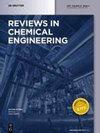State-of-the-art and recent progress in the synthesis of polyurethanes
IF 6.6
3区 工程技术
Q1 ENGINEERING, CHEMICAL
引用次数: 0
Abstract
Polyurethanes (PUs) are synthetic substances that satisfy the requirements of many industrial applications, such as films, foams, coatings, adhesives, biomedical devices, sealants, composite materials, and elastomers. The polyaddition reaction of isocyanates, categorized as CMR (carcinogenic, mutagenic, and reprotoxic), and polyols produces commercial PUs. As a result of numerous concerns about the toxic and hazardous properties of isocyanates, which limit their utilization, researchers are being encouraged to develop alternative processes for producing PUs. Nonisocyanate polyurethanes (NIPUs) are synthesized using a sustainable and eco-friendly approach to replace the toxic, hazardous, and detrimental characteristics of isocyanates. Among NIPU’s synthesis methods, aminolysis of cyclic carbonates (CCs), transurethanization, ring-opening polymerization (ROP), and rearrangement are included, with aminolysis of CCs emerging as a potential approach. Novel approaches to obtain materials with improved performance, such as functional groups like acrylates, methacrylates, POSS, and epoxies, may be necessary. Consequently, different approaches for hybrid polyhydroxyurethanes (PHUs) and distinct prepolymerization techniques for NIPUs are delineated. This review work is divided into two sections. The initial section focuses entirely on isocyanate-based methodologies for producing commercial PUs, while the subsequent section is exclusively dedicated to synthesizing NIPUs. This review encompasses all methods employed to produce commercial PUs, NIPUs, and H-NIPUs.聚氨酯合成的最新进展
聚氨酯(pu)是一种合成物质,可满足许多工业应用的要求,如薄膜、泡沫、涂料、粘合剂、生物医学设备、密封剂、复合材料和弹性体。被归类为CMR(致癌、致突变和生殖毒性)的异氰酸酯和多元醇的多加成反应产生商业脓液。由于对异氰酸酯的有毒和危险特性的许多担忧,限制了它们的利用,因此鼓励研究人员开发生产pu的替代工艺。非异氰酸酯聚氨酯(nipu)是采用可持续和环保的方法合成的,以取代有毒,危险和有害的异氰酸酯特性。NIPU的合成方法包括环碳酸酯(cc)的氨解、氨脲化、开环聚合(ROP)和重排,其中cc的氨解是一种潜在的合成方法。可能需要新的方法来获得具有改进性能的材料,例如丙烯酸酯、甲基丙烯酸酯、POSS和环氧树脂等官能团。因此,混合聚羟基聚氨酯(PHUs)的不同方法和nipu的不同预聚合技术被描绘出来。本次复习工作分为两个部分。最初的部分完全侧重于生产商业pu的基于异氰酸酯的方法,而随后的部分专门用于合成nipu。本文综述了用于生产商用pu、nipu和h - nipu的所有方法。
本文章由计算机程序翻译,如有差异,请以英文原文为准。
求助全文
约1分钟内获得全文
求助全文
来源期刊

Reviews in Chemical Engineering
工程技术-工程:化工
CiteScore
12.30
自引率
0.00%
发文量
37
审稿时长
6 months
期刊介绍:
Reviews in Chemical Engineering publishes authoritative review articles on all aspects of the broad field of chemical engineering and applied chemistry. Its aim is to develop new insights and understanding and to promote interest and research activity in chemical engineering, as well as the application of new developments in these areas. The bimonthly journal publishes peer-reviewed articles by leading chemical engineers, applied scientists and mathematicians. The broad interest today in solutions through chemistry to some of the world’s most challenging problems ensures that Reviews in Chemical Engineering will play a significant role in the growth of the field as a whole.
 求助内容:
求助内容: 应助结果提醒方式:
应助结果提醒方式:


